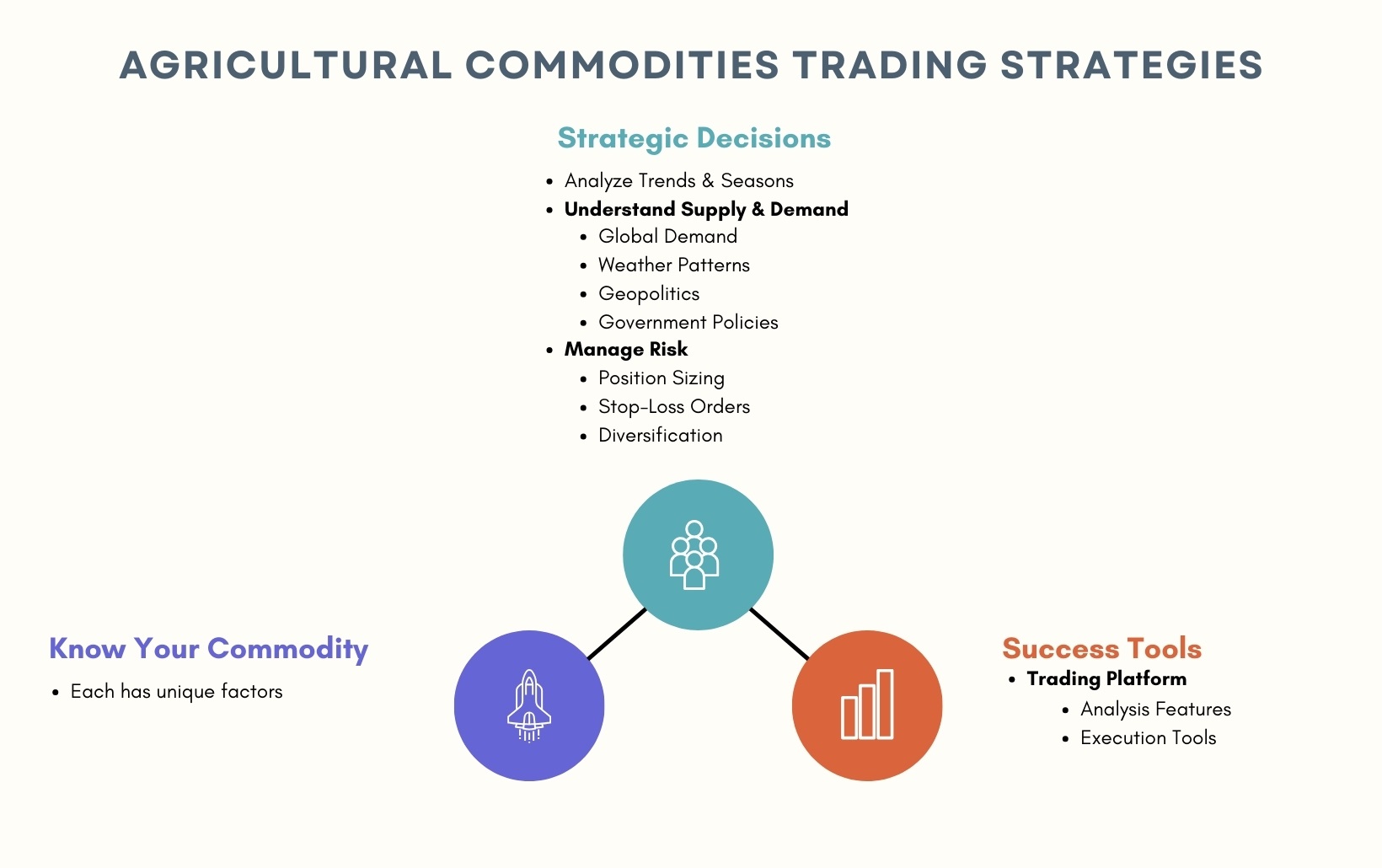
Intermediate Commodities Trading: Lesson 3 – Market Dynamics and Analysis
07 April 2024
69 views
Advanced Analysis Tools and Techniques
When navigating the complex world of commodities trading, a mix of fundamental and technical analysis tools is crucial. Let’s explore these tools in a more streamlined and approachable manner.
Fundamental Analysis Tools
- Supply and Demand Reports:
- Government Reports: Data from agencies like the U.S. Department of Agriculture (USDA) and the EIA provide insights into production, inventory levels, and consumption.
- Industry Reports: Private organizations and industry groups publish reports with forecasts and trends affecting commodity markets.
- Economic Indicators:
- Gross Domestic Product (GDP): A measure of economic activity that influences demand for commodities.
- Inflation Rates: Rising inflation often drives up commodity prices, especially precious metals like gold.
- Employment Data: Strong employment figures can lead to higher consumer spending and increased demand for commodities.
- Geopolitical Analysis:
- Political Stability: Events such as conflicts or sanctions can disrupt supply chains and affect commodity prices.
- Trade Policies: Tariffs and trade agreements can influence commodity flows and pricing.

Technical Analysis Tools
- Chart Patterns:
- Head and Shoulders: Indicates potential reversals in trends.
- Triangles: Signify consolidation periods and potential breakout points.
- Double Tops and Bottoms: Help identify reversal patterns and potential trend changes.
- Technical Indicators:
- Fibonacci Retracements: Identify potential support and resistance levels based on historical price movements.
- Average True Range (ATR): Measures market volatility and helps set appropriate stop-loss levels.
- Volume: Analyzing trading volume can confirm trends and signal potential reversals.
- Price Action:
- Trendlines: Drawn on charts to identify the direction and strength of a trend.
- Support and Resistance Levels: Key price levels where the market tends to reverse direction.
Practical Application
- Combining Fundamental and Technical Analysis:
- Example: Use fundamental analysis to assess the impact of a new trade policy on oil supply, then apply technical analysis to identify entry and exit points based on price charts and indicators.
- Using Economic Indicators:
- Example: If employment data shows strong job growth, analyze its potential impact on demand for industrial metals and adjust your trading strategy accordingly.
- Interpreting Chart Patterns:
- Example: Spot a Head and Shoulders pattern in the gold market. Use this pattern to anticipate a potential trend reversal and adjust your trading position.
Example: Analyzing Gold
- Fundamental Analysis:
- Supply Report: Monitor gold production and mining data from industry reports.
- Economic Indicators: Track inflation rates and economic growth, as they can drive demand for gold as a hedge.
- Technical Analysis:
- Chart Pattern: Identify a Double Top pattern indicating a potential decline in gold prices.
- Indicator: Use Fibonacci Retracements to find potential support levels if the price starts to decline.
- Price Action:
- Trendline: Draw trendlines on a gold price chart to determine the current trend and identify potential breakout points.
Conclusion
Advanced analysis tools, including fundamental and technical analysis, are essential for making informed trading decisions in the commodities market. By effectively combining these tools and techniques, you can enhance your trading strategy, identify opportunities, and manage risks more effectively.
This concludes the Intermediate Commodities Trading course. You now have a deeper understanding of advanced market dynamics, trading strategies, and analysis tools. Continue practicing and refining your skills to achieve success in the commodities markets.




